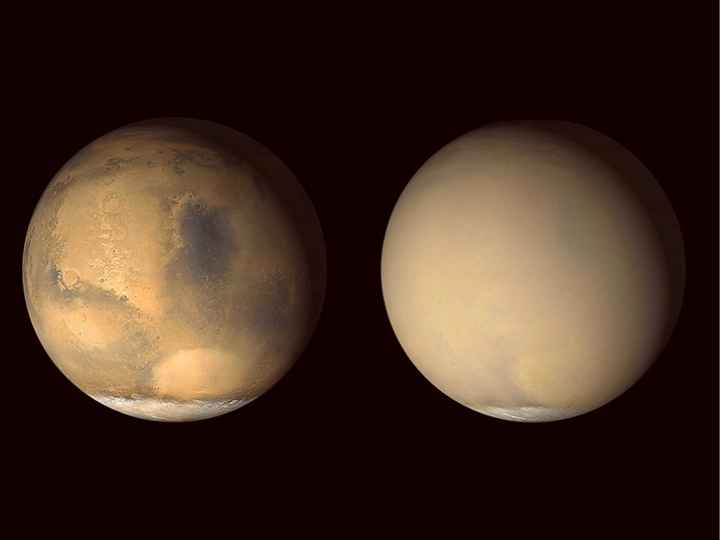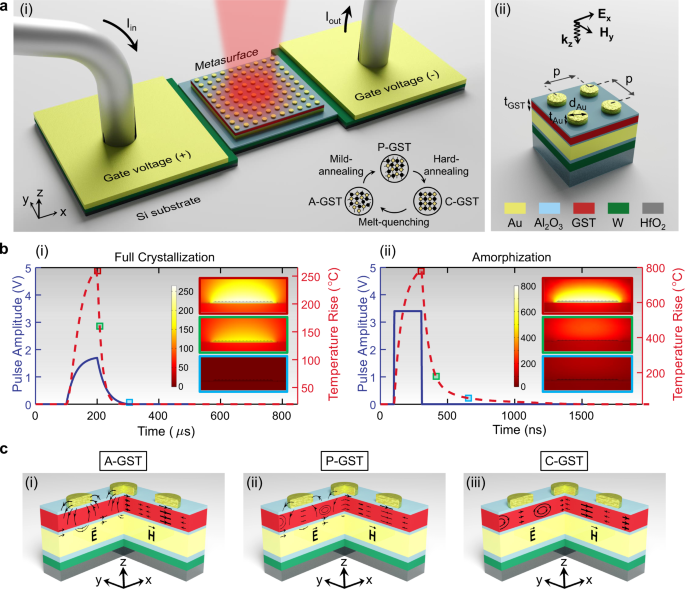長期にわたる気候変動の痕跡は、地球が抱える気候の問題を予見している可能性がある Traces of Long-Ago Climate Change Could Foretell Earth’s Own Climate Troubles
2022-05-16 ヒューストン大学(UH)

UH researchers found a link between Mars’ dust storms and its seasonal energy imbalance. Further studies could grant insight into how ancient climate change affected the Red Planet, perhaps even how Earth’s future may be shaped by climate change. At left, Mars in clear conditions; at right, Mars enveloped by a seasonal dust storm. Photo credit: NASA / JPL / MSSS
最も興味深い発見の1つは、火星の砂嵐の発生メカニズムの1つが、放出されるエネルギーよりも吸収されるエネルギーの方が多いということです。
火星は大気が薄く、軌道が非常に楕円であるため、特に温度差の影響を受けやすい。近日点の季節(火星の南半球では春と夏)に太陽に最も近づくと、非常に多くの太陽熱を吸収し、砂嵐が発生するのもこの極端な軌道の部分である。火星の軌道が太陽から遠ざかるにつれて、火星が吸収する太陽エネルギーは少なくなる。これと同じ現象は地球でも起こるが、火星では特に極端であることが研究者らによって明らかにされた。
<関連情報>
- https://uh.edu/news-events/stories/2022-news-articles/may-2022/05162022-mars-seasons.php
- https://www.pnas.org/doi/abs/10.1073/pnas.2121084119
火星の放射エネルギーと季節的なエネルギーのアンバランス Mars’ emitted energy and seasonal energy imbalance
Ellen Creecy , Liming Li, Xun Jiang, Michael Smith, David Kass, Armin Kleinböhl and Germán Martínez
Proceedings of the National Academy of Sciences Pblished:May 16, 2022
DOI:https://doi.org/10.1073/pnas.2121084119
Abstract
The radiant energy budget of a planet is essential to understanding its surface and atmospheric processes. Here, we report systematic measurements of Mars’ emitted power, which are used to estimate the radiant energy budget of the red planet. Based on the observations from Mars Global Surveyor, Curiosity, and InSight, our measurements suggest that Mars’ global-average emitted power is 111.7 ± 2.4 Wm−2. More importantly, our measurements reveal strong seasonal and diurnal variations of Mars’ emitted power. The strong seasonal variations further suggest an energy imbalance at the time scale of Mars’ seasons (e.g., ∼15.3% of the emitted power in the Northern autumn for the Southern Hemisphere), which could play an important role in generating dust storms on Mars. We also find the 2001 global dust storm decreased the global-average emitted power by ∼22% during daytime but increased the global-average emitted power by ∼29% at nighttime. This suggests that global dust storms play a significant role in Mars’ radiant energy budget.



